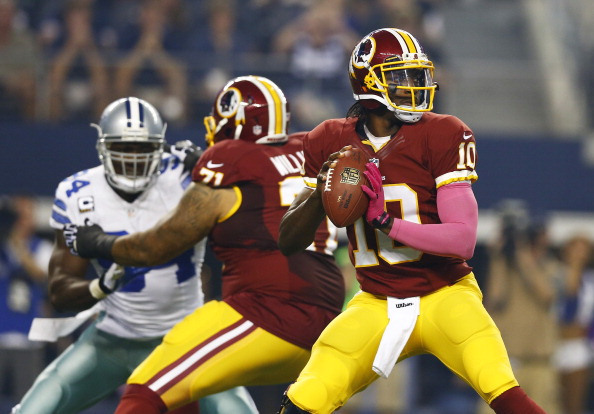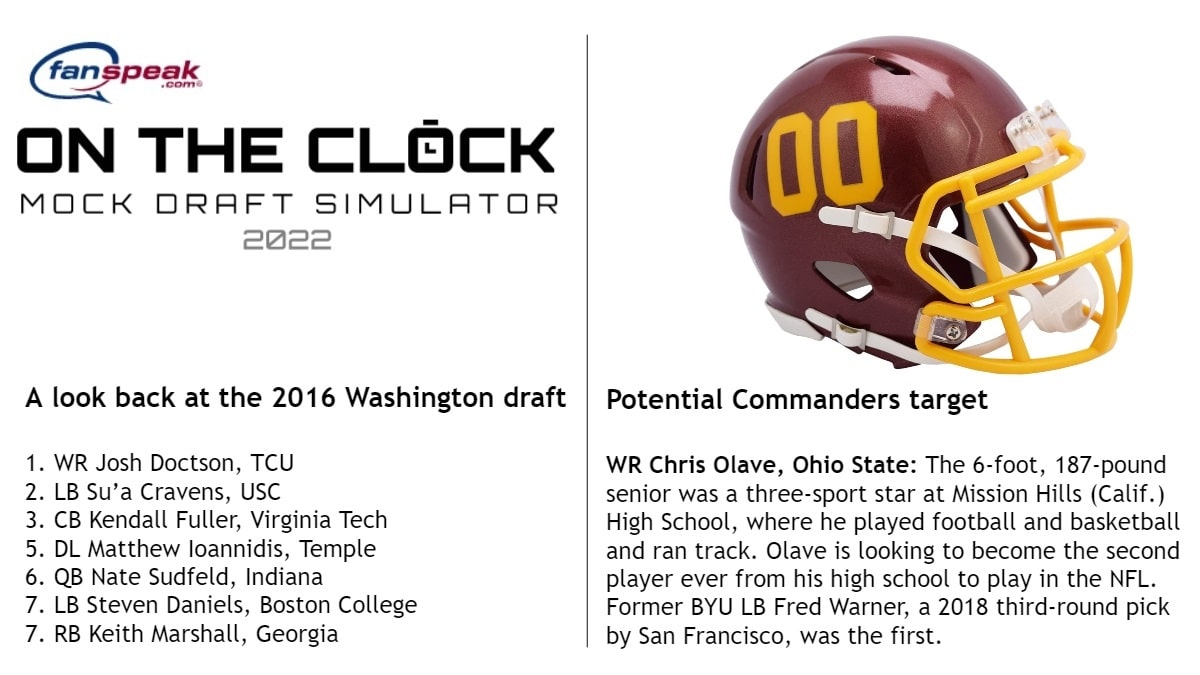DeSean Jackson Signing Is Better For the Skins Than A High Draft Pick

While I’m not the biggest fan of the DeSean Jackson signing as there is little correlation between the talent of a team’s receiver corps and their record, there is one big upside to signing DeSean Jackson, now the Redskins won’t use a high draft pick on a wide receiver. Even after the signing of Andre Roberts the speculation was the Redskins would use a 2nd or 3rd round pick on a wide receiver to get another weapon for RGIII. That would have been a pretty big mistake, given the track record of rookie wide receivers, and one that could have cost the Redskins dearly. Jackson’s signing now eliminates that “need” and should allow the Redskins to have a far more productive draft. Here is how Jackson stacks up versus taking a receiver at the top of the 2nd round:
(*Note I’m not saying a team should never take an early round WR. Just that the Redskins with their top 2 WR’s set in Garcon and Roberts for the next three years and a receiving TE in Jordan Reed, it was an unnecessary risk)
Early Production: Jackson
-I think many people felt that if the Redskins drafted a WR at the top of the 2nd round, they would instantly become a major threat and would put up 800-1,000 yards and 50-70 catches. The reality is that wasn’t going to happen. In the history of the NFL just 9 rookie receivers have topped the 1,000 yard mark that first season, and that is from any round of the NFL draft. Most of them (though not all) were first round picks, making it less likely that the 34th pick would have brought that value. On average you might have 2-3 receivers top the 50 catch, 800-900 yard mark each year, and perhaps 2-3 more in the 40 catch 700 yard range. That is maybe 4-6 productive rookie receivers a year out of the 30-35 drafted each season. That is a horrible early return rate and the chances are the Redskins weren’t going to get near that level of production. Particularly not on an offense that already had Garcon, Roberts and Reed.
Jackson though should be a lock for at least the 50 catch, 900 yard range if not breaking 1,000 yards. In his 6 years he’s topped 900 yards 5 times, with 3 1,000 yard seasons. He’s never had fewer than 45 catches and since his ypc is so high he is still going to produce good numbers with that level of catches. His career per game averages are 4.1 catches and 70.3 yards, which puts him on pace for 66 catches and 1,125 yards over 16 games. Now he might not hit those numbers on a team with Garcon, Roberts and Reed, but he’s clearly going to out produce a rookie this year.
Long term Production: Jackson
-Now of course it’s not just what Jackson does this season versus a rookie that matters, but what happens going forward as well. While it’s true in years 2, 3 and 4 you have more drafted receivers start to “pan” out and start putting up those 900-1,000 yard seasons, receiver still has the highest bust rate of any position. While many will point to Alshon Jeffery who had a dud of a rookie year, but a huge sophomore season, he still represents the exception not the rule. Of the 9 receivers drafted in the first two rounds in 2012, just 4 have broken a combined 1,000 yards receiving and only 3 of them have 1,500 total yards or more. To take it a year farther, just 3 WR’s from the 2011 draft (A.J. Green, Julio Jones and Torrey Smith) have cracked 2,000 combined yards from the first 4 rounds of that draft. Jackson will easily get 1,500 yards and 2,000 yards (and likely well more) over the next 2 and 3 years.
Some may point to the future beyond the three year mark when Jackson’s contract is up, and that is a valid point as a rookie WR would bring at least 4 years of team control. Here’s the thing though in looking at a rookie WR beyond those four years you have no idea if they will still be with the team at that point. And if they are retained, similar to Jackson they will need another big contract. Also, chances are you aren’t going to retain that wide receiver beyond that rookie deal, even if they are successful players. In 2009 6 WR’s were taken in the first round, only two Micheal Crabtree and Jeremy Maclin will be with the team that drafted them heading into their 6th season. Take it a step further, none of 9 2nd or 3rd round WR’s are still with the team that drafted them. Looking at the 2010 draft, this was the first year 2nd round or later WR’s were no longer under team control from the rookie deal and could be free agents. Unless Damian Williams re-signs in Tennessee, none of the 11 2nd and 3rd round WR’s drafted that year are still with their team heading into year 5.
Jackson’s production over 3 years is likely going to be better than a rookie receivers over 4 and chances are that guy wouldn’t be here beyond that time frame.
Cost: Even
Now one would think that this would clearly favor the 2nd round pick as the 34th overall pick should only cost $5.5 million over 4 years compared to Jackson’s $24 million over 3 years, but that ignores the actual value of a 2nd round pick. As seen above spending that pick on a WR would have likely resulted in a waste of resources. Using that 2nd round pick on either another player that has a greater chance to offer positive impact or in a trade back scenario to help restock the roster carries a good bit of value that makes up the difference between the two prices. Now Jackson’s cost shouldn’t be ignored, nor the fact that with him in the fold Roberts is now overpaid for his role, but freeing up this 2nd round pick is big for the Redskins and has the potential to add a lot of value to the roster.
Benefit for RGIII’s Development: Jackson
-One reason people were so in favor of drafting a WR is to help develop Robert Griffin III, by giving him another quality weapon that he can trust. The fact of the matter is, with the learning curve of wide receivers and the high bust rate, chances were that rookie WR could do more harm than good. Jackson on the other hand is a known commodity, and is clearly a weapon. He will make things easier on Griffin, by getting open and making big plays. Jackson has the game breaking ability to turn short and intermediate throws into big gains, meaning Griffin has to do less on his own.
Threat to the Defense: Jackson
-Another prevailing school of thought was that a rookie WR opposite Garcon would present enough of a threat to open things up for the Redskins top wide receiver. While Garcon led the league in catches last year, he didn’t have a lot of room to operate as defenses focused their attention on him. It was also thought that the addition of a top rookie could open up the running game as defenses wouldn’t be able to creep safeties into the box, because of this additional threat. In reality though neither thing was going to happen. Opposing defenses don’t fear rookie WR’s regardless of their draft status or potential. Last season Keenan Allen the Chargers 3rd round pick, became the 9th rookie WR to top 1,000 yards yet despite his success he wasn’t getting top receiver attention for most of the season. When the Redskins faced off with teams with a top receiver capable of going over 1,000 yards, that receiver was typically shadowed all game by DeAngelo Hall. Yet when the Redskins faced San Diego in the middle of the season, they matched up their rookie David Amerson on Allen and the Chargers exploited that match-up late in the game and almost came from behind to win the football game. At the time Allen was clearly the Chargers best WR threat, and easily the best rookie WR in the league yet the Redskins didn’t look to match their top corner on him or double cover him.
Jackson on the other hand represents a real threat to opposing defenses and it could make for an easier going for Pierre Garcon as he probably won’t face as tough of coverage. Jackson’s deep speed will also force teams to play their safeties back some, leaving the underneath routes more wide open and possibly some more favorable fronts to run against.


